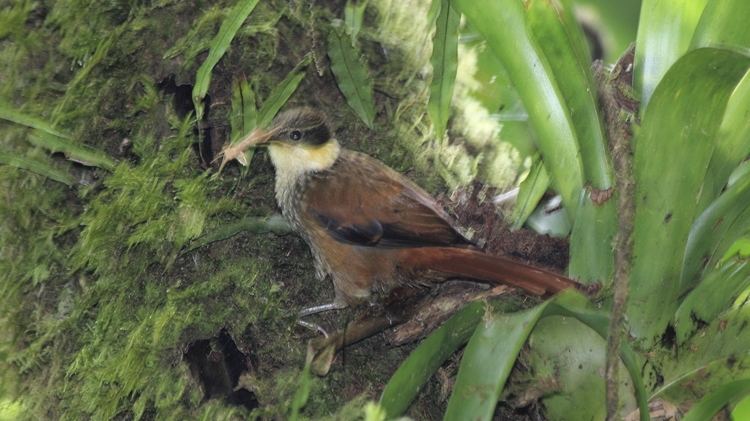Order Passeriformes Genus Pseudocolaptes Higher classification Tuftedcheek | Phylum Chordata Family Furnariidae Scientific name Pseudocolaptes lawrencii Rank Species | |
 | ||
Similar Tuftedcheek, Ruddy treerunner, Uniform treehunter, Streak‑breasted treehunter, Slaty spinetail | ||
Near endemic buffy tuftedcheek pseudocolaptes lawrencii johnsoni www colombiabirding com
The buffy tuftedcheek or Lawrence's tuftedcheek (Pseudocolaptes lawrencii) is a passerine bird in the ovenbird family, which breeds in the tropical New World in Costa Rica, western Panama and the Andes of Colombia and Ecuador. It is sometimes considered conspecific with the streaked tuftedcheek, P. boissonneautii, of South America. Birds from Colombia and Ecuador sometimes are considered a separate species, the Pacific tuftedcheek (P. johnsoni).
It occurs as a resident breeder above 1,600 m (5,200 ft) in wet mountain forests with many epiphytes. The female lays one white egg in a thickly lined old woodpecker nest. One parent, probably the female, incubates the single white egg for 29 days to hatching, covering the egg with leaves when she leaves the nest.
The buffy tuftedcheek is typically 20 cm (7.9 in) long, weighs 48 g (1.7 oz), and has a long bright rufous tail. The back is brown, and the wings are blackish with buff wingbars. The head has a buff-streaked dark brown cap and dusky eyestripe. The cheeks sport a tuft of richly buff feathers. The throat is buff and the underparts are olive brown with diffuse spotting on the breast. The sexes are similar, but young birds lack the buff crown streaks, have more sooty marking on the back and underparts, and their flanks are more orange in hue.
This species has a hard wooden chu-chu-chrrr song, often given as a duet. The call is a sharp chip.
The buffy tuftedcheek forages actively amongst mosses, vines, bromeliads and other epiphytes for insects, spiders, and even small amphibians. It will join mixed feeding flocks in the middle levels of the forest.
The scientific and alternative English names of this bird commemorate American amateur ornithologist, George Newbold Lawrence.
